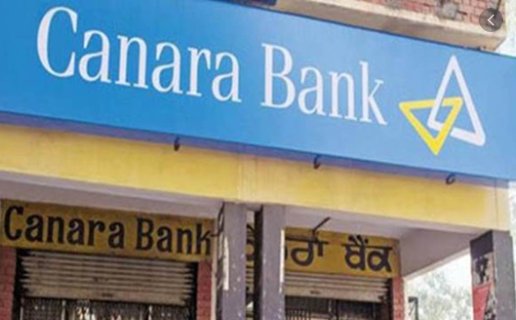Devinder Sharma
Lakshminarayan is a farmer from Shimoga in Karnataka. He had taken a loan of Rs 35,000 from a local branch of Canara Bank. About a month ago, he received a threatening call from the bank, asking him to pay back the pending dues or they will be forced to initiate action for recovering the amount. Panicked, he rushed to the bank. Since no bus was available at that time, he walked for 15 km in a hilly terrain to reach the bank. At the bank, he was told to pay Rs 3.46 of the pending loan amount.
This story is a grim reminder of the double standards the banks have in place when it comes to treating their customers. While the poor who fail to repay loans often receive inhuman treatment, forcing many of them to either land in jail or commit suicide, the rich are treated with kid gloves and are allowed to get away with their act, with the bank itself taking the blow. Take the case of the lead bank, the State Bank of India (SBI). According to a news report, the bank had written-off Rs 1.23-lakh crore of corporate bad loans in the past eight years. We are told that, technically speaking, a bank write-off is not a loan waiver, and the recovery process continues. However, all that the bank has been able to recover in these eight years is Rs 8,969-crore which comes to a little over 7 per cent of the outstanding credit.
The biggest defaulters in this particular case were Bhushan Power & Steel Ltd with an outstanding loan of Rs 7,705-crore and Videocon Industries Ltd with pending dues of Rs 3,411-crore. As per an RTI reply, both the companies had failed to pay back even a single penny. In fact, out of the 56 borrowers in the list that was made available, the recovery from 36 companies was zero. For a balance of Rs 3.46, a farmer was asked to come to the bank and pay it up, but what happened to the 36 companies from whom SBI failed to recover even a penny?
Another news report, based on an RTI reply, had revealed that only 10 per cent of the bank loans written-off in four years, between 2015-16 and 2018-19, have been recovered. Out of a total of Rs 4,32,584 crore written-off in these four years, public sector banks could recover only `45,659-crore. If 7 to 10 per cent of the total amount is what eventually the banks are able to recover, the question is, why are banks trying to give an impression that the write-offs of corporate debt is in any way different from the farm loan waiver?
Using the ‘technical’ difference between a write-off and waiver, banks have always maintained that writing-off bad loans does not mean that the recovery proceedings have stopped,but this is simply a clever smoke-screen to cover up the massive corporate defaults.
Strangely, this ‘technical’ cover up became a banking tradition over a period of time. Prior to that, the RBI had in a circular issued to banks advised them to refrain from the practice. “Banks are required to explore all available means of recovery before writing off any account fully or partly. It is observed that some banks are resorting to technical write-off of accounts, which reduces incentives to recover. Banks resorting to partial and technical write-offs should not show the remaining part of the loan as standard asset.”
Probably to cover its own lapses, banks have routinely been claiming that the write-off is simply a shift of the accounts from one ledger to another while the recovery goes on. But many banking experts say, when bad loans are written-off, banks actually remove the assets from the balance sheets, knowing well they have lost all hope of recovering anything.
This brings up a question. Why the banks should not be asked to first clear all options of recovery before announcing a write-off? Why deliberately create confusion in the minds of the people (as well as policy makers) by presenting a misleading picture of bank profits position by pushing the losses in a separate ledger? This is a mischievous practice and needs to be discontinued.
The RBI mustact heavily against banks for such deliberate cover-up. Instead, banks are exerting pressure to set up a bad bank that takes care of the bad loans. Which means instead of addressing the fundamental reasons behind the malaise of increasing bad loans, banks are wanting another cover-up. Setting up a bad bankis a bad idea.
In April, RBI stated that `68,067-crore which was due from 50 wilful defaulters over the years has been written-off by nationalised banks. Many absconding businessmen, including the diamond merchant Mehul Choksi, are among them. Wilful defaulters are those who have the ability to pay back but don’t do so. Many banking experts have been seeking criminal proceedings against such defaulters, but the government is simply not listening.
All India Banking Employees Association general secretary CH Venkatachalam recently stated: “It is known that bulk of these bad loans are attributable to big businesses and the affluent. Many cases of default are found to be deliberate, wilful and on account of diversion of funds. Unfortunately, bank loan default is still a civil offence and hence criminal proceedings are not being instituted against them.”
Launching criminal proceedings against the wilful defaulters should be the first step to stop banks being duped heavily by the rich and the powerful. Farmers continue to be penalised for petty loan defaults, while the rich get away so easily. If banks can take ‘haircut’ for thousands of crores of company defaults, why banks can’t in general and in this case Canara Bank in particular, take a ‘haircut’ of `3.46? Why make a poor farmer travel all the way, spend a day’s hard labour, for just depositing a petty amount? When will the banks become a little sensible?






































